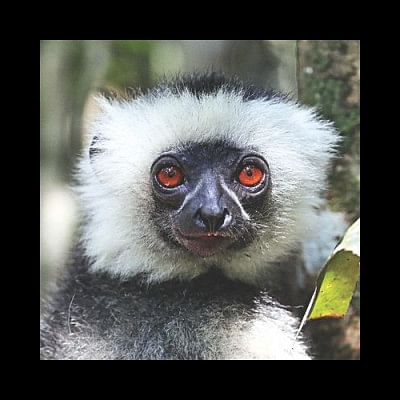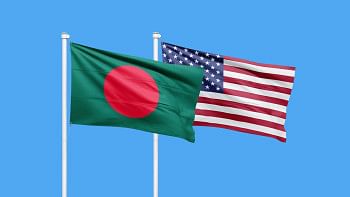Amazing Madagascar

I am walking on a trail in a dense forest. Surrounding me are tall trees which have been here for eons and which cannot be found elsewhere on this planet. At a curve, I hear muffling sounds coming from my left and stop for a look. On a clearing on the ground I come upon an extraordinary sight: two completely wild juvenile diademed sifakas - a type of lemur – are gently tumbling with each other. They stop for a moment when they notice my presence, then resume. Their play continues for a few minutes until one's ears perk up and they both leap into the trunks of two adjacent trees with an effortless jump. Perhaps they heard a fossa – the only carnivore on this island, one that eats lemurs – but soon they relax and return to the ground to continue. Having never been so close to wild animals – I was four feet away – I am cautious but the gentle demeanour of the lemurs wins my heart.
I am in Mantadia National Park, a primary forest in Madagascar. The fourth largest island in the world, Madagascar broke off from the Asia-Africa-Europe landmass approximately 165 million years ago. Since then, flora and fauna here have evolved in their own way: 80% of the species found in Madagascar are endemic - they cannot be found elsewhere. Endemics include 110 species of birds and 100+ species of lemurs. There are numerous other life-forms: for example, over 300 species of frogs have been catalogued in the island.
Most birders come to Madagascar with a checklist of birds, moving on as soon as the next one has been spotted. Fortunately my companions are more patient and willing to linger. Down south in the spiny forest – a crowd of thorny trees mostly without leaves - we stare at a subdesert mesite, which sits still on a bare tree. This bird, found only in this small corner of Madagascar, thinks it is hiding but in fact it is in plain sight. We fight with the sharp thorns of cactus and other plants to find a clear view of the bird. Nearby, sitting on top of a tall cactus, a Madagascar baza waits patiently for prey it can swoop down on.
In terms of development, Madagascar appears to be where Bangladesh was thirty years ago. With few exceptions, roads are rudimentary and there is little evidence of industrialization. However, the people are another story, friendly without exception. Language is a problem because English is a distant third after Malagasy and French.
In the capital Antananarivo we arrive at Lake Tsarasaotra for more birdwatching. A Ramsar site in the middle of the city, it teems with waterfowl. I see several new species including squacco herons, black herons (which make an umbrella with their wings to cast off reflections as the search for prey in the water), and red-billed teals. The star of the lake is the Madagascar pond heron with a blue beak and red feet. Males ruff up their feathers and rock back and forth on their feet while trying to attract a mate.
Its wild places dwindling rapidly, Madagascar still offers untold treasures for nature lovers. In our twelve days here, having covered two major natural habitats of this island, we are astounded by the diversity of life here. Madagascar is difficult to get to, but once there, you just might find paradise on earth.
facebook.com/tangents.ikabir

 For all latest news, follow The Daily Star's Google News channel.
For all latest news, follow The Daily Star's Google News channel. 



Comments